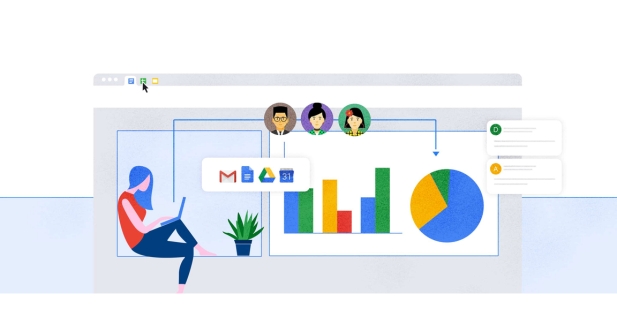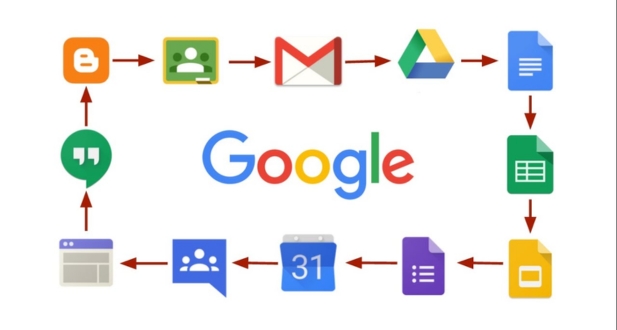Introduction
Definition of Remote Work
Remote work, often referred to as telecommuting or telework, involves performing job responsibilities outside the traditional office setting. It leverages technology to enable employees to work from locations other than the central office, allowing for flexibility in work arrangements. Remote work can take various forms, including working from home, co-working spaces, or other remote locations.
Rise of Remote Work Trends
The last decade has witnessed a significant rise in remote work trends, driven by advancements in technology, changing attitudes towards work-life balance, and global events such as the COVID-19 pandemic. Organizations have recognized the benefits of remote work, including increased productivity, access to a broader talent pool, and cost savings associated with reduced office space requirements.
Remote work trends have been accelerated by the widespread adoption of digital collaboration tools that facilitate seamless communication, collaboration, and project management across distributed teams. As professionals seek more flexible work arrangements, remote work has transitioned from a perk to an integral aspect of the modern work landscape.
Google Workspace’s Role in Facilitating Remote Work
Google Workspace stands at the forefront of empowering remote work by providing a comprehensive suite of cloud-based collaboration tools. Formerly known as G Suite, Google Workspace integrates applications such as Gmail, Google Drive, Google Meet, and Google Docs to create a unified platform that supports remote work seamlessly.
The platform’s real-time collaboration features allow remote teams to work together on documents, spreadsheets, and presentations as if they were in the same room, fostering a sense of connection and teamwork. Google Workspace’s mobility extends beyond desktops to mobile devices, enabling professionals to stay productive while on the go.
With robust security measures, Google Workspace ensures the protection of sensitive data and adherence to compliance standards, addressing concerns related to remote work security. The platform’s continuous updates and innovations reflect Google’s commitment to enhancing the remote work experience, making it a preferred choice for organizations navigating the evolving landscape of work dynamics.
In the following sections, we will delve into the specific features and tools within Google Workspace that contribute to its role in facilitating remote work, exploring how they address the unique challenges and requirements of a dispersed workforce.
Overview of Google Workspace
Introduction to Google Workspace
Google Workspace, previously referred to as G Suite, is an all-encompassing collection of collaboration and productivity tools hosted in the cloud that were created by Google. Designed to streamline communication, enhance collaboration, and foster productivity, Google Workspace serves as a centralized hub for organizations seeking efficient and flexible work solutions.
At its core, Google Workspace is more than a collection of individual applications; it represents a holistic approach to modern work dynamics. It integrates a set of intelligent and interconnected tools that empower teams to work seamlessly, whether they are in the same office or spread across different locations. The platform’s intuitive design and user-friendly interface contribute to a smooth and engaging user experience.
Suite of Collaboration Tools
Google Workspace offers a versatile array of collaboration tools, each catering to specific aspects of the work process. These tools include:
- Gmail:
Gmail serves as the platform’s email solution, providing a reliable and feature-rich communication tool. With a user-friendly interface, robust spam filters, and integrated chat functionality, Gmail is a cornerstone for professional communication within organizations.
- Google Drive:
Google Drive is a cloud-based file storage and sharing solution. It allows users to store, access, and collaborate on documents, spreadsheets, presentations, and other files in real-time. The seamless integration with other Google Workspace apps ensures a unified and efficient workflow.
- Google Docs, Sheets, and Slides:
These applications form the core of collaborative content creation. Google Docs enables real-time collaborative document editing, Google Sheets facilitates collaborative data analysis and visualization, and Google Slides empowers teams to create and deliver engaging presentations collaboratively.
- Google Calendar:
Google Calendar simplifies scheduling and coordination. Users can schedule meetings, set reminders, and share calendars, ensuring effective time management and coordination among team members.
- Google Meet:
Google Meet is a video conferencing solution that enables high-quality virtual meetings. With features like screen sharing, chat, and real-time captions, it facilitates seamless communication and collaboration for remote teams.
Cloud-Based Infrastructure
Google Workspace operates on a cloud-based infrastructure, leveraging the power of Google Cloud to provide a scalable, secure, and accessible environment. This cloud-based approach brings several advantages:
- Accessibility:
Users can access Google Workspace from any device with an internet connection, promoting flexibility and enabling remote work scenarios.
- Scalability:
The cloud infrastructure allows organizations to scale their usage based on evolving needs, ensuring optimal performance and resource utilization.
- Security and Reliability:
Google Cloud’s robust security measures and data redundancy contribute to the security and reliability of Google Workspace. Data is encrypted in transit and at rest, and Google’s infrastructure is designed to withstand disruptions.
In the subsequent sections, we will delve deeper into each collaboration tool within Google Workspace, exploring their functionalities and how they contribute to the platform’s effectiveness in facilitating remote work.
Collaboration Tools for Remote Work
Remote work relies heavily on effective collaboration tools, and Google Workspace offers a suite of applications tailored to enhance communication, facilitate virtual meetings, streamline file management, and enable collaborative content creation. Let’s explore these collaboration tools in detail:
Gmail for Communication
Gmail stands as a cornerstone in professional communication, providing a robust email platform with features tailored for remote work scenarios.
- Unified Communication Hub:
Gmail serves as a unified hub for communication, integrating emails, chat, and video conferencing. Users can seamlessly switch between email and chat, fostering real-time communication.
- Smart Features:
Gmail incorporates intelligent features such as priority inbox, suggested replies, and smart categorization of emails, helping users manage their communication efficiently.
- Integration with Other Apps:
The integration of Gmail with other Google Workspace apps ensures a cohesive experience. Users can directly open Google Docs, Sheets, or Calendar appointments from their emails, streamlining workflow.
Google Meet for Video Conferencing
Google Meet is a powerful video conferencing solution that facilitates virtual meetings, an essential component of remote collaboration.
- HD Video and Audio Quality:
Google Meet offers high-definition video and audio quality, ensuring clear communication during virtual meetings. This is crucial for maintaining engagement and understanding in remote discussions.
- Screen Sharing and Collaboration:
The platform supports screen sharing, enabling participants to share presentations, documents, or their entire screens. This feature enhances collaboration during meetings.
- Real-time Captions:
Google Meet provides real-time captions, promoting inclusivity and aiding participants who may benefit from text-based representation of spoken words.
Google Drive for File Storage and Sharing
Google Drive serves as the centralized file storage and sharing solution within Google Workspace, fostering collaboration on documents, spreadsheets, and presentations.
- Cloud-Based Storage:
Google Drive offers cloud-based storage, allowing users to access their files from any device with an internet connection. This accessibility is crucial for remote teams working from various locations.
- Real-time Collaboration:
Files in Google Drive can be edited in real-time by multiple users. This collaborative editing feature ensures that team members can work together on documents, spreadsheets, and presentations simultaneously.
- Version History and Recovery:
Google Drive maintains a version history for files, enabling users to track changes and revert to previous versions if needed. This feature safeguards against accidental edits and promotes accountability.
Google Docs, Slides, and Sheets for Collaborative Documents
Google Docs, Sheets, and Slides are integral components of Google Workspace, providing collaborative platforms for document creation and editing.
- Real-time Editing:
Allowing multiple users to edit documents simultaneously in real-time promotes seamless collaboration. Changes are reflected instantaneously, enhancing productivity in a remote work setting.
- Commenting and Suggestions:
Users can leave comments and suggestions within documents, facilitating feedback and discussion. This feature streamlines the editing process and ensures clarity in communication.
- Offline Editing Capabilities:
Google Docs, Sheets, and Slides offer offline editing capabilities, allowing users to work on documents even without an internet connection. This is particularly valuable for remote workers who may face connectivity challenges.
Google Calendar for Scheduling and Coordination
Google Calendar plays a crucial role in scheduling and coordinating tasks, meetings, and events for remote teams.
- Shared Calendars:
Users can create and share calendars, allowing team members to view each other’s schedules. This fosters transparency and aids in scheduling meetings at mutually convenient times.
- Meeting Scheduling:
Google Calendar integrates with Google Meet, making it easy to schedule and join virtual meetings directly from the calendar interface. This simplifies the process of coordinating virtual gatherings.
- Reminders and Notifications:
Calendar provides reminders and notifications for upcoming events, helping remote workers stay organized and ensuring they don’t miss important meetings or deadlines.
In the next section, we will delve into how Google Workspace’s cloud-based infrastructure contributes to the accessibility, scalability, and security of these collaboration tools, making them well-suited for remote work environments.
Enhanced Communication and Connectivity
Effective communication is the linchpin of successful remote work, and Google Workspace excels in providing features that enhance real-time collaboration and connectivity across various devices. Let’s explore how Google Workspace goes beyond traditional collaboration tools to foster enhanced communication and connectivity:
Real-Time Collaboration Features
Google Workspace is designed to facilitate real-time collaboration among team members, replicating the spontaneity of in-person interactions even in a virtual environment.
- Simultaneous Editing:
The suite of Google Workspace apps allows multiple users to edit documents, spreadsheets, and presentations simultaneously. This real-time collaboration feature ensures that all team members can actively contribute to a project at the same time.
- Live Comments and Suggestions:
Users can leave comments and suggestions directly within documents. This not only streamlines the feedback process but also encourages a dynamic and interactive approach to collaboration.
- Presence Indicators:
Presence indicators in Google Workspace apps show the real-time status of collaborators. Knowing whether a team member is actively engaged enhances communication by providing context on availability.
Google Chat for Instant Messaging
Google Chat serves as an instant messaging platform integrated into Google Workspace, facilitating quick and informal communication among team members.
- Direct Messaging and Group Chats:
Google Chat allows users to send direct messages to individuals or create group chats. This feature promotes quick discussions and fosters a sense of camaraderie among team members.
- File Sharing within Chat:
Users can share files directly within Google Chat, eliminating the need for separate emails. This seamless integration streamlines communication and file sharing in one consolidated platform.
- History and Searchable Conversations:
Google Chat maintains a history of conversations, making it easy to refer back to previous discussions. The ability to search within chats enhances productivity by quickly retrieving important information.
Integration with Mobile Devices
One of the strengths of Google Workspace is its seamless integration with mobile devices, enabling users to stay connected and productive while on the move.
- Mobile Apps for Productivity:
Google Workspace provides dedicated mobile apps for Gmail, Drive, Docs, Sheets, and more. These apps offer a consistent and optimized user experience, ensuring that remote workers can access essential tools from their smartphones or tablets.
- Offline Access:
Many Google Workspace apps support offline access, allowing users to continue working on documents or emails even without an internet connection. This feature is invaluable for remote workers who may face connectivity challenges.
- Cross-Device Syncing:
All devices are automatically synchronized with any modifications made on one device. This ensures that remote workers can seamlessly transition between their desktop, laptop, tablet, or smartphone without missing a beat.
Seamless Transition between Devices
Google Workspace promotes a fluid and uninterrupted workflow by enabling users to transition seamlessly between different devices.
- Continuity across Devices:
Users can start a task on one device and seamlessly transition to another without losing progress. This continuity is essential for remote workers who may switch between a desktop computer, laptop, or mobile device throughout the day.
- Integration with Google Cloud:
The cloud-based nature of Google Workspace ensures that data and documents are stored centrally, enabling a smooth transition between devices. This integration enhances collaboration and ensures that the latest versions of files are readily accessible.
In the subsequent section, we will explore the robust security measures embedded within Google Workspace, addressing concerns related to data protection and privacy in remote work scenarios.
Security and Compliance in Remote Work
Security and compliance are paramount considerations in the realm of remote work, and Google Workspace prioritizes these aspects through a robust set of features designed to safeguard data and ensure adherence to compliance standards.
Overview of Google Workspace Security Features
Google Workspace is built on a foundation of comprehensive security measures, encompassing both physical and digital aspects of data protection.
- Physical Security:
Google’s data centers, which host the infrastructure for Google Workspace, adhere to strict physical security protocols. These measures include 24/7 surveillance, biometric access controls, and redundant systems to ensure data availability.
- Authentication and Authorization:
Google Workspace employs strong authentication methods, including multi-factor authentication (MFA). This ensures that only authorized users can access sensitive information, adding an extra layer of protection beyond traditional usernames and passwords.
- Security Audits and Monitoring:
Continuous security audits and monitoring are integral to Google Workspace’s approach. This proactive stance helps identify and address potential security threats before they can impact the system.
Data Encryption and Access Controls
Data encryption is a cornerstone of Google Workspace’s security strategy, providing robust protection for information at rest and in transit.
- Data Encryption at Rest:
Google Workspace employs encryption mechanisms to safeguard data stored in its servers. This encryption ensures that even if physical security measures are breached, the data remains inaccessible without the proper cryptographic keys.
- Encryption in Transit:
When data is transmitted between a user’s device and Google’s servers, it is encrypted using industry-standard protocols. This prevents unauthorized interception and access during the transmission process.
- Access Controls:
Granular access controls within Google Workspace enable administrators to define who can access specific data and applications. This ensures that only authorized individuals have the appropriate levels of access, reducing the risk of data breaches.
Compliance Standards
Compliance with industry-specific and regulatory standards is a key focus of Google Workspace, ensuring that organizations can confidently navigate the complex landscape of data protection requirements.
- GDPR Compliance:
Google Workspace aligns with the General Data Protection Regulation (GDPR), which governs the protection of personal data for individuals within the European Union. The platform provides tools and features that empower organizations to meet GDPR requirements.
- HIPAA Compliance:
For organizations in the healthcare sector, Google Workspace complies with the Health Insurance Portability and Accountability Act (HIPAA). This ensures that sensitive health information is handled with the utmost security and privacy.
- Continuous Compliance Monitoring:
Google Workspace undergoes continuous compliance monitoring, and the platform is designed to evolve in response to changes in regulatory standards. This commitment ensures that organizations using Google Workspace remain in compliance with the latest requirements.
In the upcoming section, we will explore best practices for organizations using Google Workspace to enhance data security, educate users, and maintain a proactive approach to remote work security.
Optimizing Productivity in Remote Work
Productivity is a critical aspect of remote work, and Google Workspace offers a suite of features to enhance efficiency, streamline tasks, and integrate seamlessly with other applications. Let’s delve into the strategies and tools available to optimize productivity within Google Workspace:
Customization and Integration of Apps
Google Workspace provides customization options, allowing users to tailor their workspace to suit individual preferences and workflows.
- Customizable Dashboards:
Users can arrange Google Workspace apps on their dashboards according to their preferences. This customization ensures that frequently used tools are easily accessible, reducing the time spent navigating between applications.
- Personalized Settings:
Customizable settings within each app enable users to configure their environments based on personal preferences. From email filters in Gmail to theme choices in Google Docs, these settings contribute to a more personalized and user-friendly experience.
- Theme and Layout Options:
Google Workspace apps offer theme and layout options, allowing users to choose visual elements that align with their preferences. This personal touch can positively impact user engagement and satisfaction.
Google Workspace Search Functionality
Efficient search functionality is crucial for quickly locating documents, emails, and information within the vast data repositories of Google Workspace.
- Unified Search Across Apps:
The unified search feature allows users to perform a single search across multiple Google Workspace apps. This streamlines the process of finding relevant information and promotes a cohesive approach to data retrieval.
- Advanced Search Filters:
Each Google Workspace app incorporates advanced search filters, enabling users to refine their searches based on criteria such as date, sender, and keywords. These filters enhance precision and save time.
- Search Commands:
Google Workspace apps support search commands that allow users to execute specific queries. Learning and utilizing these commands can significantly boost search efficiency.
Task Management with Google Workspace
Effectively managing tasks is essential for remote workers, and Google Workspace provides features to organize and prioritize assignments.
- Google Tasks Integration:
Google Tasks, integrated into Gmail, Google Calendar, and Google Drive, allows users to create, organize, and manage tasks seamlessly. This integration ensures that tasks are closely tied to relevant emails, events, or documents.
- Task Due Dates and Reminders:
Users can assign due dates and set reminders for tasks within Google Tasks. This functionality helps individuals stay on top of their responsibilities and deadlines.
- Task Collaboration:
Google Tasks supports collaboration, enabling users to share task lists and work collaboratively on projects. This promotes teamwork and ensures that everyone involved is aligned on project timelines.
Third-Party App Integrations
Google Workspace is designed to integrate with a variety of third-party applications, extending its functionality and enhancing overall productivity.
- App Marketplace:
The Google Workspace Marketplace offers a wide array of third-party apps that seamlessly integrate with Google Workspace. These apps cater to diverse needs, from project management to communication tools.
- Automation with Zapier:
Zapier integration allows users to automate workflows between Google Workspace and other apps. This automation minimizes manual tasks, reduces errors, and enhances overall efficiency.
- Collaboration with External Tools:
Google Workspace supports collaboration with external tools and platforms. This flexibility enables organizations to leverage their preferred applications while still benefiting from the core features of Google Workspace.
By customizing, utilizing search effectively, managing tasks efficiently, and integrating with third-party apps, users can optimize their productivity within the Google Workspace environment. In the following section, we will explore strategies for maintaining a healthy work-life balance in remote work scenarios.
Training and Onboarding for Remote Teams
Training and onboarding play a crucial role in ensuring that remote teams can effectively harness the power of Google Workspace. Google provides comprehensive resources and best practices to facilitate smooth onboarding and ongoing education for remote team members.
Google Workspace Training Resources
Google offers a wealth of training resources designed to empower users with the knowledge and skills needed to navigate and utilize Google Workspace effectively.
- Google Workspace Learning Center:
The Google Workspace Learning Center serves as a central hub for educational materials. It provides interactive lessons, tutorials, and guides for each Google Workspace application. Users can access a variety of topics, ranging from basic functionalities to advanced features.
- Google Workspace Help Center:
The Help Center serves as a repository of articles and troubleshooting guides. It covers a wide range of topics, including frequently asked questions, known issues, and step-by-step instructions. Users can search for specific topics or explore the Help Center’s categories for targeted assistance.
- Google Workspace YouTube Channel:
Google’s official YouTube channel features video tutorials and demonstrations for Google Workspace applications. Visual learners can benefit from these engaging resources that walk through various features and functionalities.
Best Practices for Onboarding Remote Teams
Effectively onboarding remote teams involves a strategic approach to ensure that new members seamlessly integrate into the Google Workspace ecosystem.
- Virtual Onboarding Sessions:
Conducting virtual onboarding sessions via video conferencing tools allows new team members to familiarize themselves with the collaboration tools, communication channels, and best practices for remote work.
- Assigned Mentors or Buddies:
Pairing new team members with experienced mentors or buddies can expedite the onboarding process. These mentors can provide guidance on using Google Workspace efficiently and share insights on team dynamics.
- Interactive Onboarding Materials:
Creating interactive onboarding materials, such as quizzes or hands-on exercises, can reinforce learning and engagement. This approach ensures that team members actively participate in their onboarding experience.
User Education on Advanced Features
To maximize the benefits of Google Workspace, ongoing education on advanced features is essential. User education programs can focus on the following aspects:
- Webinars and Workshops:
Hosting webinars or virtual workshops led by Google Workspace experts can delve into advanced features and functionalities. These sessions provide a platform for interactive learning and Q&A sessions.
- Advanced Feature Highlight Communications:
Regular communications highlighting advanced features through newsletters, emails, or intranet updates keep users informed about new capabilities within Google Workspace.
By leveraging Google’s training resources, implementing best practices for onboarding remote teams, and providing ongoing education on advanced features, organizations can ensure that their remote teams are proficient and confident users of Google Workspace.
Conclusion
In conclusion, Google Workspace emerges as a powerful ally in navigating the complexities of remote work. Its robust suite of collaborative tools, comprehensive security features, and continuous innovation contribute to a seamless and productive virtual work environment. As organizations embrace remote work, optimizing productivity through customization, effective training, and embracing advanced features becomes imperative. Google Workspace not only meets these demands but also evolves with the ever-changing landscape of remote work. By fostering a culture of learning, providing targeted training, and encouraging collaboration, organizations can harness the full potential of Google Workspace, ensuring that remote teams thrive in a dynamic and interconnected digital landscape. As we continue to redefine the future of work, Google Workspace stands as a reliable foundation for the collaborative, secure, and adaptive workplace of tomorrow.









